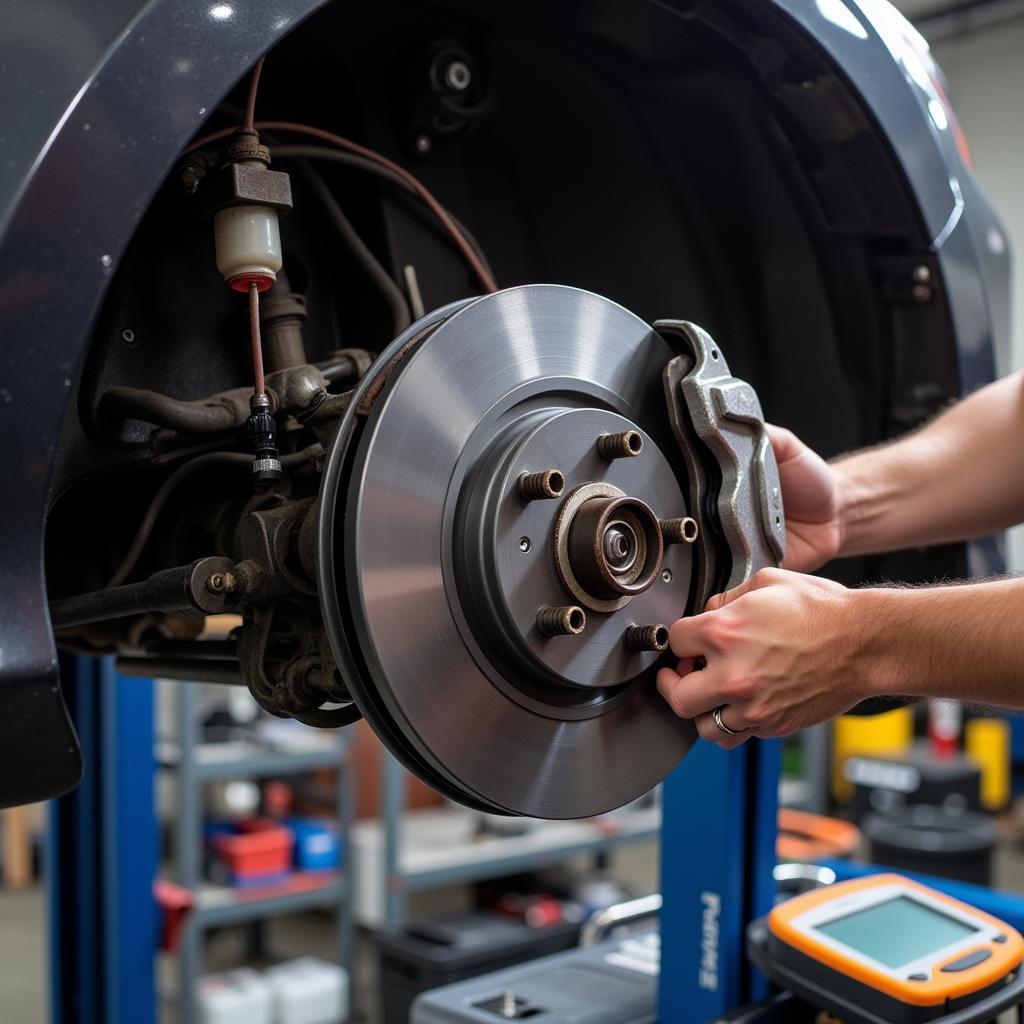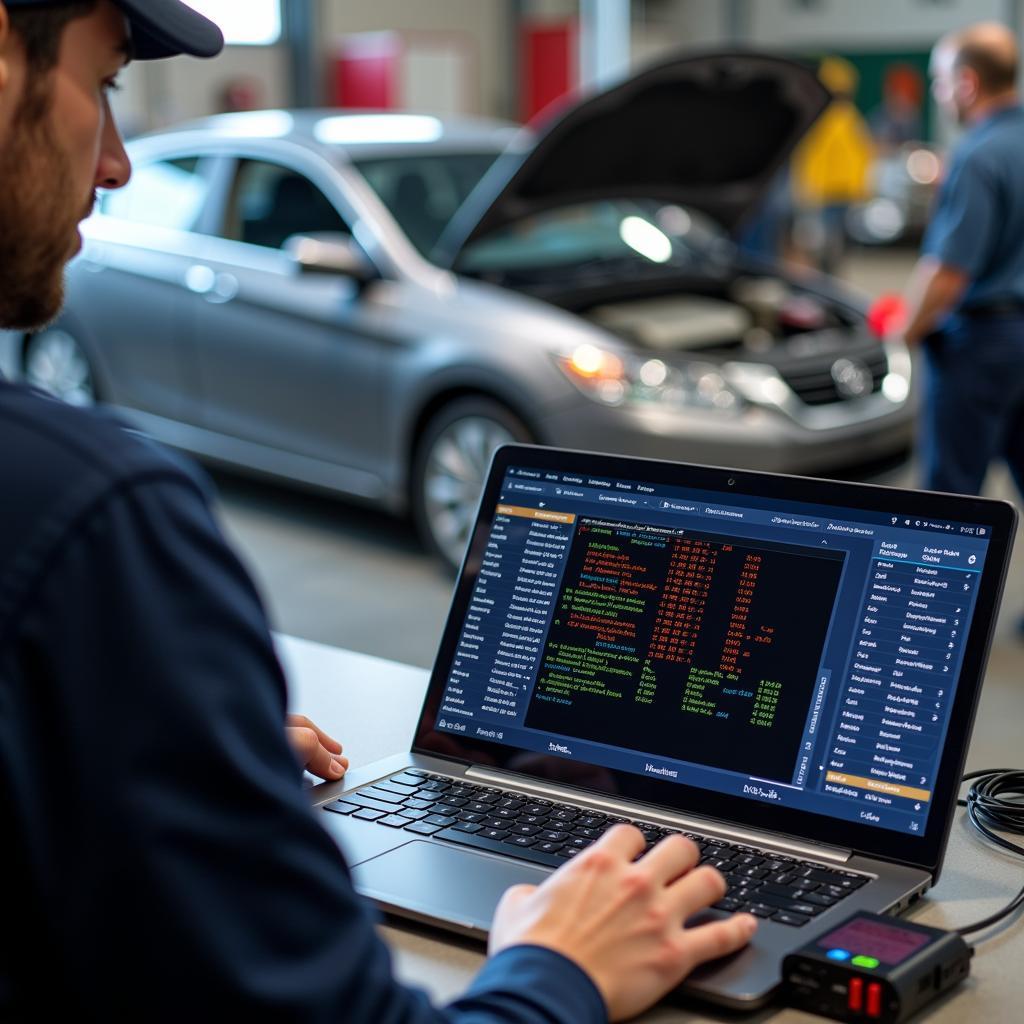If you’re experiencing the dreaded “Uphill Assist Problem Electric Brake Problem” warning light on your Honda Accord, you’re not alone. This issue has perplexed many Accord owners, leaving them feeling frustrated and unsure of the next steps. This comprehensive guide will delve deep into the common causes, symptoms, and potential solutions for this error message, providing you with the knowledge to address it head-on.
Deciphering the Warning Lights
Before diving into the specifics, it’s crucial to understand what the illuminated warning lights on your dashboard signify:
- Uphill Assist Problem: This warning, often accompanied by a flashing green “HSA” (Hill Start Assist) light, indicates an issue with the system designed to prevent rollback when starting on an incline.
- Electric Brake Problem: This warning, potentially alongside an illuminated red brake warning light, points towards a problem within the electronic parking brake (EPB) system.
While these systems operate independently, a fault in one can often trigger a warning in the other. The interconnected nature of modern vehicle systems means a single underlying problem can manifest in multiple warning messages.
Potential Culprits Behind the Warnings
The “Uphill Assist Problem Electric Brake Problem” warning on your Honda Accord can be triggered by a range of factors, from simple sensor malfunctions to more complex issues within the brake system:
- Low Battery Voltage: Modern vehicles rely heavily on optimal battery voltage for various electronic systems. A weak or failing battery can disrupt the functionality of the Hill Start Assist and Electronic Parking Brake, leading to warning lights.
- Brake Switch Malfunction: The brake switch plays a vital role in signaling to the vehicle’s computer when the brake pedal is pressed. A faulty brake switch can disrupt the communication, leading to malfunctions in systems like Hill Start Assist and Electronic Parking Brake.
- Wheel Speed Sensor Issues: These sensors, located at each wheel, constantly monitor wheel speed. This information is crucial for the proper functioning of the ABS, Vehicle Stability Assist (VSA), and by extension, the Hill Start Assist system. A malfunctioning wheel speed sensor can trigger various warning lights.
- Software Glitch: Like any computer-controlled system, glitches can occur within the vehicle’s software. These glitches can disrupt communication between modules, leading to unexpected errors and warning messages.
- Faulty ABS/VSA Module: The ABS (Anti-lock Braking System) and VSA (Vehicle Stability Assist) modules play an integral role in maintaining vehicle stability. As the Hill Start Assist system relies on these modules for proper operation, a fault within them can trigger the warning message.
Troubleshooting the Honda Accord Warning
While it’s always best to consult with a qualified mechanic for a definitive diagnosis, here are some initial steps you can take to troubleshoot the issue:
- Check the Battery: Start by inspecting your battery terminals for any signs of corrosion. Clean the terminals if necessary and ensure a secure connection. If you suspect a weak battery, consider having it tested or replaced.
- Inspect the Brake Pedal: Make sure the brake pedal is returning to its full upright position when released. Any obstruction or binding in the pedal’s movement can cause the brake switch to malfunction.
- Visually Inspect the Brake System: Look for any visible signs of damage or leaks in the brake lines, calipers, and brake fluid reservoir. If you notice any anomalies, seek professional assistance immediately.
 Inspecting Honda Accord Brake System
Inspecting Honda Accord Brake System
Seeking Professional Assistance
If the warning persists after initial troubleshooting, it’s crucial to consult with a qualified mechanic specializing in Honda vehicles, particularly those experienced in remote diagnostics, programming, and software installation.
Remote diagnostic services can offer a convenient and efficient initial assessment of the issue. Through specialized software and equipment, technicians can remotely connect to your Honda Accord’s onboard computer system to retrieve diagnostic trouble codes (DTCs), analyze sensor data, and identify the root cause of the problem.
“Remote diagnostics have revolutionized the way we approach vehicle repairs,” says John Smith, Senior Automotive Diagnostician at XYZ Auto Services. “It allows us to efficiently pinpoint the issue, often eliminating unnecessary guesswork and reducing diagnostic time for the customer.”
 Performing Remote Diagnostics on a Honda Accord
Performing Remote Diagnostics on a Honda Accord
Once the root cause is identified, the technician can recommend the appropriate course of action, which may include software updates, module reprogramming, component replacement, or a combination of these solutions.
Preventing Future Occurrences
While not all causes are preventable, regular vehicle maintenance can significantly reduce the likelihood of encountering this issue:
- Adhere to Scheduled Maintenance: Follow the manufacturer’s recommended maintenance schedule for your Honda Accord. This includes routine brake inspections, fluid flushes, and battery checks.
- Address Warning Lights Promptly: Never ignore warning lights on your dashboard. Address them promptly to prevent minor issues from escalating into major problems.
- Source Quality Parts: If repairs are necessary, always opt for high-quality OEM (Original Equipment Manufacturer) or reputable aftermarket parts.
By proactively addressing potential issues and adhering to recommended maintenance practices, you can keep your Honda Accord running smoothly and minimize the risk of encountering the “Uphill Assist Problem Electric Brake Problem” warning again.

